New Report Ties “Hottest Year on Record” to Human Toll of Disasters
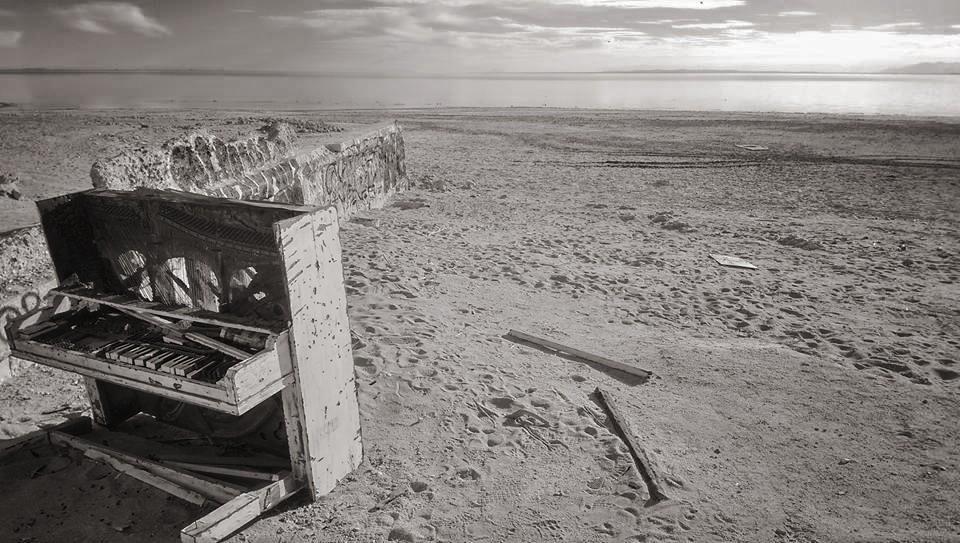

Natural disasters made 2015 a miserable year for many people around the world. According to the United Nations’ Office for Disaster Risk Reduction, the statistics were brutal. At least 98.6 million people were affected by natural disasters ranging from droughts to floods, and the economic damage could have been as high as $66.5 billion. Using the data available from the Belgian non-profit Center for Research on the Epidemiology of Disasters (CRED), the UN reports that almost 23,000 people died from the 346 natural disasters reported across the world.
Indeed, the estimated 9,000 deaths in last year’s earthquake in Nepal contributed to the number of people who died in natural disasters last year. Previous years witnessed even more dire statistics, so there is a glimmer of hope as new early warning and evacuation systems have reduced the death tool from disasters across Asia. But even better planning is needed as over the past 21 years, storms have killed over 242,000 people, which makes them the deadliest of all weather-related disasters.
Nevertheless, the UN insists that drought and floods was a factor in 92 percent of the natural disasters that occurred globally during 2015. The 32 recorded droughts last year had an impact on over 50 million people alone (though considering the drought in California last year, that number could arguably be even higher). That number is more than double the past 10 years’ average of 15 during which the world experienced the El Niño phenomenon.
Those numbers are encouraging, but of course the only thing we can predict about climate-related disasters is that they can be volatile and unpredictable. To that end, the evidence suggests many countries are becoming more proactive on issues related to disaster preparedness and climate mitigation. Countries including India, the Philippines, Malawi and Mexico were able to keep their collective death toll from storms to just over 900 last year—that is less than one-tenth the number from the previous 10-year average of approximately 9,500 fatalities.
One industry that should take take notice of these trends is the insurance sector. Although insurance companies confront huge risks to their portfolios due to climate related risks, most insurers are not addressing the potential harm that they could face in an era of repeated climate disasters. This is especially true in the United States, which the UN estimated had the second largest number of natural disasters worldwide, trailing only China. As the world’s climate becomes even more volatile, it behooves the insurance sector to become even more involved in efforts to work hard on climate change mitigation efforts, or at least adaptation efforts, in order to protect their business and ensure the long term prospects of their customers.
Image credit: Leon Kaye
What Do the SDGs Mean for Your Employees?


By Marianne Hughes
We might have heard a lot about the U.N. Sustainable Development Goals since their launch late last year. But we at GivingForce still find ourselves discussing how to best apply them to business. Could the answer be through your people?
We recently went along to a corporate social responsibility (CSR) meet-up at the London Business School, where we heard Katherine Rusack of BITC speak about what the Sustainable Development Goals (SDGs) mean for business. Since then, we’ve been thinking about the impact of the SDGS on the people in your business, meaning your employees. How can big business make an impact on the global goals through engaging their employees?
The SDGs were prepared by U.N. members in order to tackle major development challenges by 2030. There are a total of 17 goals, which cover a range of topics from gender equality to hunger to climate change. The SDGs follow the Millennium Development Goals, but call for a bigger engagement from business in particular.
The SDGs aim to impact some of the world’s biggest challenges, yet packaging them into workable goals for organizations brings some big challenges in itself. We're going to focus in on a couple of the challenges: engagement and measuring progress.
Engagement with the SDGs and raising awareness of them is the first step, with the U.N. already launching fun graphics and social media campaigns to engage the wider public. Inside organizations, we wonder what business might be doing to engage their employees with the SDGs. First it means getting buy-in from the top and choosing which SDGs your business will focus on.
Each organization and industry is different, and a study from PwC shows how industries varied by their choices of SDGs. Interestingly, one of the most popular was SDG No. 8: promote sustained, inclusive and sustainable economic growth, full and productive employment, and decent work for all. This goal is one which most businesses feel they can make an impact, by ensuring that as an employer they align with the SDGs.
This goal could be interpreted from different angles, for example many organizations might relate it to ensuring their global supply chain complies with the Modern Slavery Act. The SDGs are meant to apply equally to all nations. So, if we look more locally in our role as an employer, should we also ensure our staff are engaged with the SDGs?
After engagement, the challenge becomes measuring progress against the SDGs. The magic key to unlocking progress is gathering data: Efforts to engage can be wasted if that engagement can’t be measured, proven or traced.
As we search for the most effective ways to both engage our staff with the SDGs and measure our progress toward the SDGs, we wondered how we might help solve these two challenges at the same time. We have found that by allowing employees to generate their own data toward goals, for example logging their volunteering hours or setting up payroll giving, engagement increases whilst data collection becomes quick and reliable. Instead of spending time collecting the data, CSR professionals interpret it and extract key metrics for reporting.
Interpreting the data has, in some cases, come to mean not just progress toward a goal, but also trying to measure impact. Once an employee has participated in an activity such as volunteering, what is the impact as a result on not just the employee, but the local community or the charity involved? We have found encouraging feedback from employees and charities can produce an indication of the impact. Impact needs to be measured over the long term, which we need to start measuring effectively now so that by 2030 we can try to imagine the impact of business on the SDGs.
Employee volunteering and involvement in local communities seems to be going through a wave of growth, which is just one of the possible implications of the SDGs on your employees. Do let us know what you think the SDGs mean for your employees in the comments section.
Graphic of the SDGs from sustainabledevelopment.un.org
Marianne Hughes works in client relations at GivingForce.
3 Things to Remember When Upping Your Community Involvement


By Dusty Wunderlich
Every company, no matter what size or industry, should be involved in its community. Whether it’s a local community, an online community or even a trade-specific community, maintaining a presence outside the typical market space can provide your business with long-reaching benefits.
It’s difficult to track the monetary ROI of community involvement, but the advantages — both tangible and otherwise — are very real.
The perks of community engagement
Studies show the correlation between employee productivity and purpose-driven work. Just about everyone works for the money, but employees often work harder and search for better solutions when they have a reason beyond their bank accounts to go to the office each day. Millennials especially seek purpose beyond money in the workplace. And with this group surpassing Generation X as the largest generation in the workforce, businesses must make attracting the best millennial talent a top priority.On a more practical note, business leaders who are involved in their communities have a much higher potential for networking. This is especially important in the political realm. If one business focuses solely on the bottom line and another is getting involved and meeting people, which one is more likely to have the backing of informed decision makers on issues that impact the business climate?
Industry-specific communities have their advantages as well. Creating a network of business leaders who share common goals can build relationships and open doors to new opportunities. A company’s ability to demonstrate a selfless vision outside its own business goals goes a long way toward building a better business outlook.
How to get involved
When it comes to giving, many companies (especially those in phases of major growth) get in trouble with large, unplanned donations -- leading to massive expenses that lack the type of impact they want to have. Choosing the right initiatives is key, as is aligning community activism with a strong message.
When we select new community projects, we look primarily at three criteria:
1. Visibility and strategic alliance
For a young disruptive company like mine, Bristlecone Holdings, connecting with movers and shakers is a matter of survival.
Several Bristlecone Holdings employees serve on boards throughout their local communities, and our leaders are heavily engaged in local politics. We work closely with former leaders of our state to discuss future legislation and the impact it could have on our growing business community.
Joining these political conversations provides major rewards, both directly for our growth and indirectly as better legislation attracts more businesses like ours to the region.
2. Mission-driven compatibility
My team at Bristlecone looks for groups that share our mission and values. Right now, we work with an organization called Zawadisha, which provides small loans for big-impact items to rural Kenyan women to finance their livelihoods. Zawadisha’s work falls in line with our goals to help people in need gain access to better financing.
3. Proven impact
Any nonprofit worth its funding must be able to provide reporting and track results. I personally admire PNC’s recent initiative to improve literacy in its area. The data tracking for the plan is impressive, focusing more on the results than the dollars spent. By zeroing in on the right areas, the initiative can provide tangible benefits that really resonate with the community.
The most successful companies are visibly generous in money and manpower, but even those that don’t have money to give can succeed simply by offering their time. Figure out the expertise your company and workforce offer in an area you’re passionate about, then lend your talents to help.
If you do make monetary donations, don’t just show the public. Your employees only know what you tell them, so to maximize the effect of a purpose-driven workforce, communicate progress and involvement opportunities to your workers regularly.
Lending a hand within and outside the company’s scope can impact your business’s life in myriad ways. Make strategic community involvement part of your overall strategy, and start enjoying the wonderful benefits of giving back.
Image credit: Pixabay
Dusty Wunderlich is the founder and CEO of Bristlecone Holdings, a high-growth network of consumer and business-to-business finance platforms and financial technologies. Its mission is to democratize the world of finance for the better. Dusty is a current recipient of the Twenty under 40 Awards in Reno, Nevada, and is a member of the Young Entrepreneur Council.
Integrating the Human Experience into Corporate Responsibility


By Tamar Cohen
It’s lunchtime and just a few minutes remain before the next meeting. There are two pizza stores on the block – one next-door and one across the street. Both places know me, have what I like ready and waiting. But the place across the street offers something the place next-door doesn’t. When I buy my slice there, a portion of my payment is automatically donated to buy a homeless person a slice. In one decision, I get to buy myself lunch, offer up some instant charitable value and still make it back to the next meeting on time.
As a customer, I engage more loyally, because I can feel good about my purchase and know that I just spent money not only on myself, but also toward a greater good. The employees reinforce that sense of mission with their positive attitudes and dedication, because they know they are working to support causes that have tangible meaning. It is a trifecta of customer experience, employee engagement and CSR (corporate social responsibility) programs all in one action. Imagine the impact this can make when taken to the corporate level.
A revolution is already happening in corporate America at a global scale – corporations are taking notice and transforming what it means to have a marketable CSR program. Companies that implement these CSR programs authentically are winning at three levels – loyalty by customers, happier and more committed employees and, finally, providing meaningful purpose in society. This is beyond just good corporate strategy – this is your bottom line.
The revolution is that personal giving can now be integrated giving via CSR – meaning every company can help customers feel more connected to issues they care about and in turn, receive the halo effect of loyalty as a result. Customers everywhere are pressed for time, and now companies can tangibly help without impacting their customer's day-to-day life. In other words: To make a real difference in the world and causes we believe in, don’t disrupt the consumer; disrupt CSR.
A thriving and successful customer experience program requires a parallel thriving and successful employee engagement program. Actively disengaged employees cannot be trained to love their customers if they do not believe in the product, or in their employer. They can be trained on methodologies, however, developing customer loyalty, which drives profitability and growth – cannot be trained. If customer experience is about creating an outside/in view, loyalty must be designed from the inside/out.
Corporate social responsibility builds the strongest foundation to demonstrate to customers and employees that the organization is committed to a full cycle of engagement – customer, employee, and the role of the company in society at large. Thinking through the overall human experience, the CSR program can be the core of this interaction. While there is increasing research around customer experience and tactics for varying levels of success, the strategic approach less explored is the role of CSR to demonstrate a deeper commitment to all people, completing this cycle of engagement.
This level of interconnectedness will reinforce each other and when executed as core to the strategic plan, the organization can manifest an experience that has positive impact on customers, employees, corporate perception, profitability and growth.
So, how can we move from strategy to execution?
1. State a mission or a social purpose
State it clearly. Broadcast it widely. Make it known consistently. In 2013, as many as 90 percent of Fortune 500 companies had explicitly stated CSR initiatives.
As importantly, the level of awareness on behalf of the consumer is also on the rise, in terms of recognizing the role of CSR in company branding. Luo & Bhattacharya wrote that in 1993, only 26 percent of consumers could name a company as a strong corporate citizen, while in 2004, the number surged to 80 percent.
Mission- or purpose-driven organizations are getting noticed, and it matters more and more to consumers.
2. Use honesty and authenticity as a core platform
In an article in the American Marketing Association journal, Xueming Luo & C.B. Bhattacharya pointed out that the value of CSR is only recognized when the commitment is authentic, the product being offered is of high value, and the company continues to innovate and prove relevance by industry expertise.
A company’s CSR program, as well as the corporate product/ service, both influence customers’ perceptions of the company’s products. The mission or stated purpose of the company must be honest for this alignment to work
3. Empower your employees to drive the purpose forward
From the employee’s perspective, the company’s contribution to societal good is reflected back with positive engagement and support. The recognition that in contributing to the success of the organization, the employee is also contributing to a social mission, can improve employee morale and productivity.
Taking the step further to allow employees to actively manage and promote additional layers to the program via volunteering, positive social media mentions, and other localized acts of kindness, will not only empower the employees but can also go further and deeper in promoting the company’s brand and position in overall market awareness.
4. Recognize the recruiting opportunity
Millennials want to know where their money is going when they invest in anything. As employees, they claim that they want a job “where I can make an impact."
A Cone Communications survey found that most even agree that they would take a pay cut to achieve that goal. Overall, Americans have becoming more likely to consider a company’s reputation when making a purchase, employment and investment decisions.
5. Move CSR to a front-and-center function of your organization
Recognize this can be a low-cost effort to drive deeper on existing CSR programs which most Fortune 100 companies already have in place. These programs are already operationalized, staffed and managed. As customer experience and employee engagement programs become more fully fleshed out and developed within organizations, the existing CSR program can be tweaked to align to the customer and employee experience development. Costs and resources therefore, are minimal, though should be managed impactfully, to maintain authenticity – again, critical for success.
The simple end point is this – leveraging existing tools, existing programs, and existing (and approved) budget expense lines, corporations can take even bigger steps towards increasing their bottom lines in customer retention, reduce expense by enduring less employee attrition while doing even more for the communities they support and society at large. It can be, and is, that straightforward.
Image credit: Pixabay
Tamar Cohen is a seasoned customer experience financial services executive who is launching a new trademarked index and educational series focused on providing a 360 human engagement experience, while maintaining and growing profitability.
Why Don’t Conservatives Support Balancing Nature’s Budget?
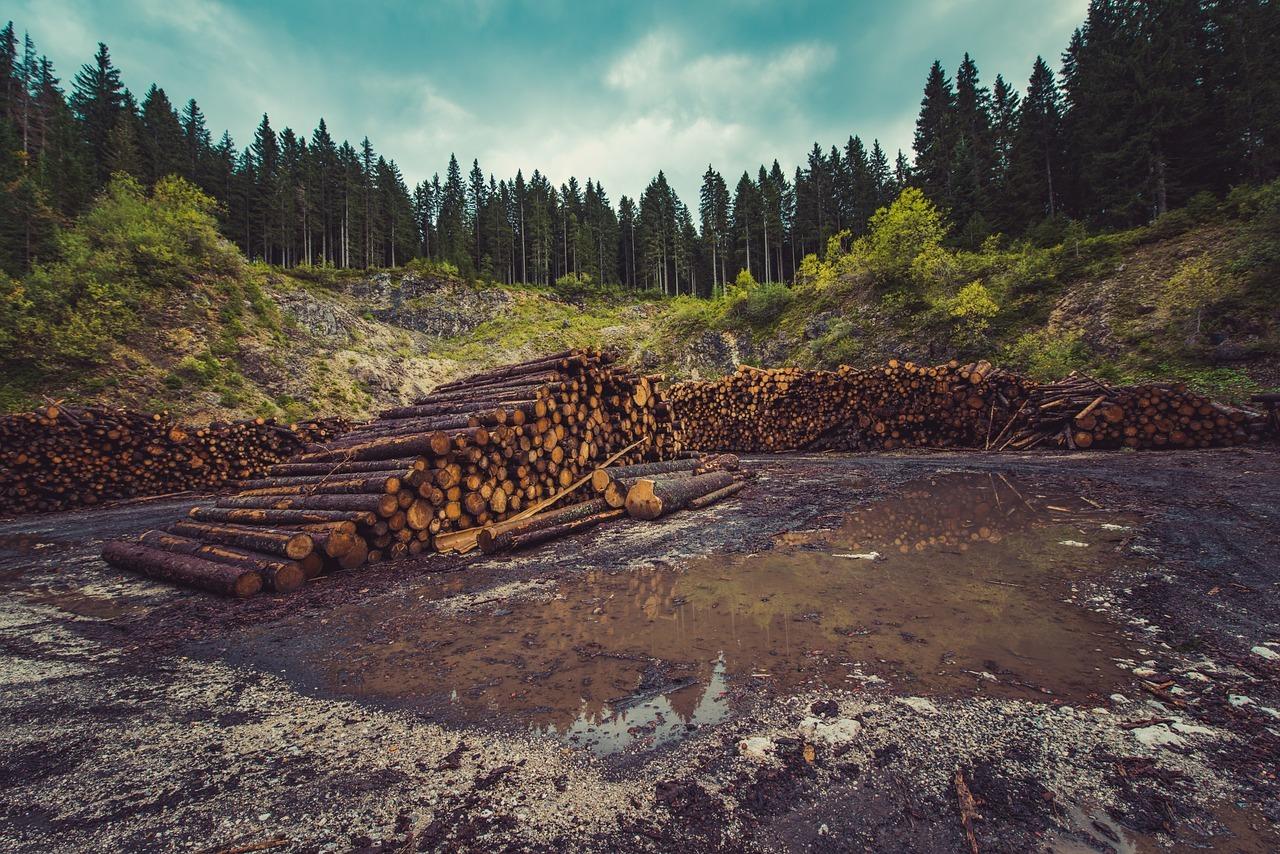

By Kyle G. Crider
“The economy is a wholly-owned subsidiary of the environment, not the other way around.” -- Gaylord Nelson
Conservatives* love a balanced budget, with one notable exception: our natural capital budget. If the Earth is a business, conservative extraction policies – can you hear the chants of “Drill, baby drill?” – are treating this business like a fire sale. Instead of living off nature’s interest, conservatives advocate drawing down irreplaceable natural capital: Mine the lands, drill the oceans, harvest like there’s no tomorrow. Burn, baby burn.
*I don’t mean all conservatives, of course. However, if one looks at the conservative presidential front-runners – as well as most any conservative currently holding office – you will find this mentality ubiquitous.
“Anyone who believes exponential growth can go on forever in a finite world is either a madman or an economist.” -- Kenneth Boulding
Anyone who believes that humans can’t have a significant impact on something as large as the Earth haven’t seen it from space lately. As National Geographic reports: “Humans have altered the face of the Earth more than any other species, and the pace of change is increasing … Our most obvious impact is on the land, where more than 80 percent of Earth's surface has been marked by human activity.”
By remaking the planet in our own image, we’ve even created our own geologic epoch. Welcome to the Anthropocene.
“Organisms cannot survive in a medium consisting of their own final outputs. Neither can economies.” -- Herman E. Daly
Humans are now responsible for an asteroid-sized mass extinction event on par with five previous mass extinction events known from earth’s history. Famed Harvard biologist E.O. Wilson describes the means by which we are reducing biodiversity and eliminating whole species and ecosystems with the following mnemonic: HIPPO
- H - Habitat loss and fragmentation
- I - Invasive species
- P - (Over-)Population
- P - Pollution
- O - Overharvesting
What’s worse: All of these losses are occurring with a global human population of 7 billion resource-hungry folks. But the human population is expected to grow to 10 billion folks by 2050 – a growth that is projected to destroy a fifth of the world’s remaining natural habitat.
What happens when humans (or any organisms) exceed ecological limits? Unfortunately, the strict laws of physics apply. Crash, baby crash. Sooner or later, the population must fall (i.e., folks will die) until the remaining population can subsist on whatever resources are left. Not a pretty picture. We must conserve our resources, reduce waste and material consumption, and learn to live off nature’s interest by powering our economy with clean, renewable solar and wind power.
So, even as we lament that there is no conservation in today’s conservatives, “Their very conservatism is secondhand, and they don’t know what they are conserving.” -- Robertson Davies
To end on a hopeful note: Younger conservatives tend to be more open to things like, well, conserving than their older counterparts. Speaking of mass extinction events, let us hope these new mammals soon rise to replace the dying dinosaurs of resource extraction and depletion. They will be reclaiming a great conservative environmental heritage.
“Conservation is a great moral issue, for it involves the patriotic duty of insuring the safety and continuance of the nation.” -- Theodore Roosevelt
Image credits: 1) Pixabay 2) Unsplash via Pixabay
Kyle G. Crider is Energy Project Manager for the Alabama Environmental Council and the Alabama Solar Knowledge project. Kyle holds a bachelors in Environmental Studies and a Master of Public Administration (MPA) degree with a double-emphasis in Urban Planning & Policy Analysis. He is a Leadership in Energy and Environmental Design Accredited Professional, Neighborhood Development (LEED AP ND).
Asia Pulp & Paper supports new foundation to address deforestation


Asia Pulp and Paper has launched a new initiative, the Belantara Foundation, to direct funding to protect Indonesian rainforests. The Foundation will use an innovative, multi-stakeholder approach to deal with deforestation, a model which it believes will provide a example of best practice that can be replicated by others. That approach includes the importance of a holistic view—the Foundation will work with existing projects—and a global reach to secure funding. The Foundation will be looking for major commitments from the corporate world, with support by government and civil society, to address forest loss in Indonesia, which contributes to global warming. The Advisory Board includes the noted environmentalist, Tony Juniper
Yet Another Study Links Fracking And Water Contamination
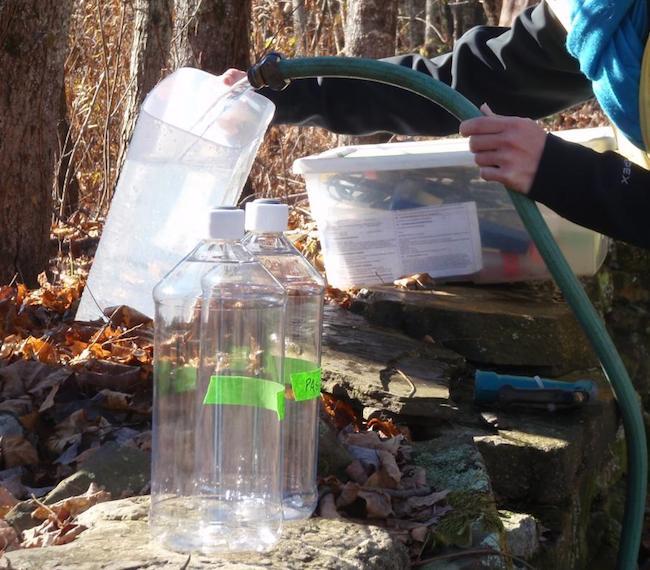

Last summer the U.S. Environmental Protection Agency came out with a draft report on fracking and drinking water contamination that appeared to be a cry for help.
The EPA's state-of-the-science assessment concluded that no widespread impacts could be discerned. But the agency further concluded that data scarcity and quite a few other "limiting factors" effectively prevented it from assessing the true scope and nature of the problem in terms of water resources nationwide. In other words, the state of the science on fracking research was -- and is -- miserable.
Nevertheless, research teams are hammering away at the connection between fracking and drinking-water contamination, and the latest development comes from a research team at Stanford University.
The new Stanford fracking report
The Stanford fracking report was presented last weekend at the annual meeting of the American Association for the Advancement of Science under the title, "Does Hydraulic Fracturing Allow Gas to Reach Drinking Water?"Fracking is short for hydraulic fracturing, an oil- and gas-drilling method that involves shooting vast amounts of chemical brine underground. Much of the attention has focused on the potential for these chemicals to contaminate resources in and around the drilling site or at fracking wastewater disposal sites.
The Stanford report took a related but different angle. It looked at the potential for natural gas from the drilling site to contaminate local water supplies.
Generally the report echoed the EPA's assessment, noting that the number of specific, confirmed problems is small relative to the total number of fracked wells in the U.S. However, the report nails down the causes of some of those problems, making the case for stronger regulation of the natural gas industry.
Speaking of the natural gas industry, this is a good point to pause and mention that the report's lead author is Stanford professor Rob Jackson, who is a senior fellow at the Precourt Institute for Energy. Precourt was recently established as Stanford's natural gas research hub.
Jackson is also a senior fellow at the Stanford Woods Institute for the Environment, which tracks natural gas issues among other environmental topics. Both institutes are engaged in steering the natural gas industry toward more sustainable fracking practices, as illustrated by this snippet from a 2014 Stanford News Service article posted on the Stanford Woods site:
"The environmental costs – and benefits – from 'fracking,' which requires blasting huge amounts of water, sand and chemicals deep into underground rock formations, are the subject of new research that synthesizes 165 academic studies and government databases..."[snip]
"Society is certain to extract more gas and oil due to fracking," said Stanford environmental scientist Robert Jackson, who led the new study. "The key is to reduce the environmental costs as much as possible, while making the most of the environmental benefits."
With that in mind, let's take a closer look at that new fracking report. Jackson describes part of the problem as an issue with well engineering, with or without the involvement of fracking. He cites one high-profile case in Parker County, Texas, where the drillers only cemented the top and bottom of a well, leaving a 4,000-foot stretch in the middle without a liner:
"The gap allowed gases to move up and down freely like a chimney and contaminate the drinking-water supply," Jackson explains.
As for fracking itself, Jackson's study suggests that the common practice of drilling one mile or more below the surface should be adequate to protect drinking water supplies. The problem occurs when wells are more shallow. Jackson found more than 2,600 shallow wells in the U.S., defined as less than 3,000 feet, many located in California:
"We found a surprising number of places where companies are fracking directly into shallow freshwater aquifers," he says. "In no other industry would you be allowed to inject chemicals into a source of drinking-quality water."
Yikes!
Yet another black eye for fracking
The Stanford study may disappoint some community advocates looking for solid evidence that would trigger federal action. But when you consider it in the context of other studies, the evidence is piling up that fracking is a major public health issue.
Consider the activity just in the past year. The state of New York kicked off 2015 with a statewide ban on fracking, following an exhaustive study by state health officials. In June, TriplePundit noted three new fracking studies: one linking fracking wastewater to earthquakes, another that raised alarms over the impact of fracking operations on water quality in Texas, and another associating lower birth-weight with mothers living near gas wells in Pennsylvania.
Also in June, a long, detailed article in Rolling Stone magazine followed up on an earlier Newsweek report on anecdotal evidence of infant mortality linked to fracking in Utah.
In July 2015 another fracking report linked a significant increase in hospitalizations to the "meteoric" rise in natural gas wells in Pennsylvania. Another report from Jackson on the risk posed by shallow wells was released later that month.
In related news, earlier this week the Associated Press ran a story on another fracking angle: the competition for water resources between the drilling industry and agriculture.
Rounding out the issue is the latest round of earthquakes in Oklahoma, which researchers linked to the use of injection wells for disposing of fracking wastewater.
State regulators placed some restrictions on the use of disposal wells, but the temblors continue. A mini-swarm of three earthquakes occurred last week at slightly below the benchmark level of 3.0 magnitude, and earlier this week a major 5.1 magnitude earthquake was among a swarm of 11 to hit northwest Oklahoma. The largest quake was felt across Kansas, Missouri, New Mexico, Nebraska, Texas, Arkansas and Iowa, the Associated Press reported.
Fortunately there were no reports of injury or damage, but stay tuned ...
Photo (cropped): "Technician Alissa White collects drinking water near an oil and gas field in Parker County, Texas" by Rob Jackson, Stanford University.
Scalia's Death and Senate Politics: What's Next for Clean Power?
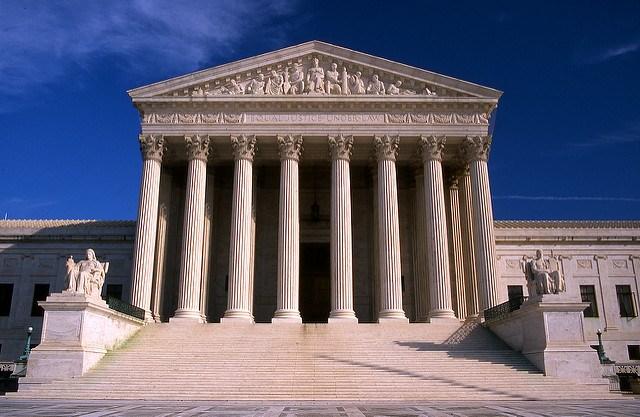

The death of U.S. Supreme Court Justice Antonin Scalia has put Senate Republicans into "all hands on deck" mode. Republicans, anticipating an attempt by President Barack Obama to nominate a candidate to replace the Supreme Court's conservative leader, began strategizing about their response as soon as the death was announced this weekend. And as Washington Post reporter Chris Cillizza points out, their unwillingness to play ball is an open admission that may hurt them at voting time.
But that isn't the only problem that Congress' ranking conservatives have to worry about. Scalia's death places the Supreme Court's recent stay of the federal Clean Power Plan in a more dubious light. It's important to remember that a federal appeals court already ruled on the plan's ability to stay in force while a lower court considered a pending lawsuit by states and coal companies. The Supreme Court's "unprecedented" decision to get involved prematurely -- and to place a stay on the plan until the lawsuit was heard -- was the result of a 5-4 ideological split, with Scalia as part of the ruling majority.
With the Supreme court now evenly divided between those who ruled for the stay and those who decided against it, an appeal by the Obama administration could now see an even split, rather than a majority ruling, says Climate Central's senior science writer, John Upton. "Such a scenario would uphold the looming ruling from the [lower] federal appeals court," Upton wrote on Sunday.
It isn't hard to see why Senate conservatives don't want to confirm an Obama nomination to replace Scalia. A candidate reflecting more progressive views on things like women's reproductive rights, same-sex marriage and the functionality of a minimum wage might erode the more conservative-leaning strides that Republicans hope to make next year. Worse, it would offer a wider crack in the door for energizing the country's clean-power industry and switching away from fossil fuel sources.
But not confirming an Obama nominee this year won't ensure the Republican-led legacy, either. In fact, Senate Majority Leader Mitch McConnell's advice to his peers that the vacancy "should not be filled until we have a new president" may offer a stronger, not a weaker, position for the Clean Power Plan and the EPA's ongoing efforts to reign in industry carbon emissions. Stalling -- or, as some say McConnell's words suggest, blocking -- a nomination this year would leave an even split in the Supreme Court to vote on not just the anticipated appeal of the stay, but also any other cases heard during that time.
Waiting until after the elections with the hope that a Republican would be elected to the White House in November would be folly as well: As Cillizza of the Washington Post points out, voters' patience with a Congress that appears bent on being unwilling to engage in dialogue with the president may work against its members both in the final Supreme Court shake-out and at the polls. And it is the latter that really defines the Republicans' ability to maintain majority numbers and their perceived control in Congress.
But what may really be overlooked here is the tenuous message of the Supreme Court stay itself. Numerous environmental organizations have been careful to remind us that the stay didn't really change anything about the Clean Power Plan. It just added a delay and a bit more drama to the picture. The actual request for a stay, spearheaded by the West Virginia attorney general's office, pivoted on two key points: Whether it is likely that the majority of the court will vote that the EPA's regulatory changes are illegal, and whether the plan is causing "irreparable harm" to states.
Numerous sources have weighed in on the first, including Christine Todd Whitman, who served as George W Bush's EPA chief, who suggested that the issue "should be put to rest."
"EPA does in fact have the authority," Whitman told the Senate in a testimony in 2014. “The law says so and the Supreme Court has said so, twice."
The second issue, the idea that states are being irreparably harmed and forced to assume unrecoverable costs, is questionable in its long-term strategy as well. In fact, it's an argument that cities like West Virginia's capitol, Charleston, may have some interest in. Recently, the West Virginia Department of Commerce boasted that Charleston's available solar energy boosted it to the top of a short-list of cities that already rely on photovoltaic power. It's the cities, not the states, making the case that a shift to renewable energy actually helps, not hurts, pocketbooks at the end of the day. To date, at least four cities in the U.S. are powered completely by renewable energy. An increasing number of others are finding that even partial change makes economic sense, not harm.
An in an ironic twist of evidence, the Nevada Public Utility Commission's recent rewriting of the state's rules for solar customers underscores that point. Solar companies are calling it quits in Nevada as consumers' disillusionment rises with the newest rules -- meaning that Nevada loses not just happy residents, but business investors as well.
But whether a new justice is nominated and confirmed in 2016, Scalia's departure likely changes things -- for the Supreme Court, for the potency of Senate Republican ambitions and for President Obama.
"Fate has handed him the opportunity of any presidency -- to swing the balance of the Supreme Court," notes Chicago Tribune writer Linda Hirshman.
After years of fighting an often well-entrenched Republican majority, Obama may finally be able to fulfill some of his loftiest goals. And if the tempo of this weekend's Senate discussions is anything to go by, when it comes to the Clean Power Plan's fate, he may not have to lift a finger.
Image: Flickr/Jeff Kubina
Bringing Needed Capacity to Nonprofits and Inspiration to American Workers
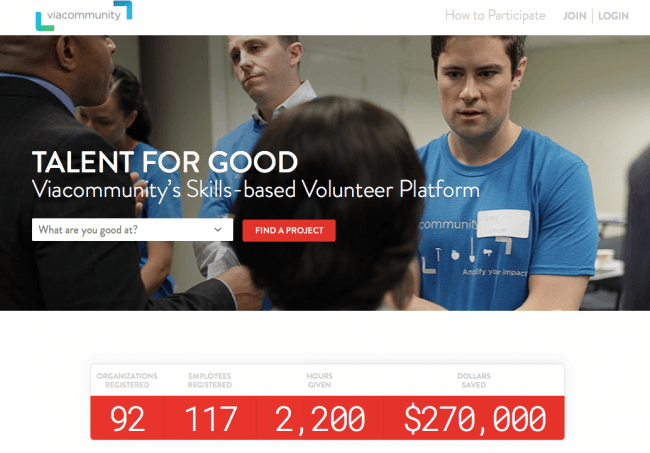

For many, volunteering conjures mental images of tasks like picking up trash along waterways, planting gardens at cancer centers, or building playgrounds for youth programs and low-income neighborhoods. Many adults enjoy these activities that give them a break from desk-based jobs, get them outdoors, and foster networking opportunities within their company and the community -- and this form of volunteering serves an important purpose.
However, only about 25 percent of Americans volunteered in 2013 (the lowest rate in a decade). This leaves the bulk of nonprofits without needed capacity, limiting their ability to fulfill their missions, and many adults are left without inspiring volunteer opportunities. Millennials in particular, who are entering the workforce in larger numbers as boomers retire, are expressing a strong desire for purposeful work.
At the same time, full-time employees in the U.S. are logging an average of 47 hours a week, (with salaried employees clocking in at 49 hours), which leaves little time for volunteering. Due to the tight job market, there is a historic number of part-time workers in the U.S. (6.5 million as of June 2015). The majority of those workers either supplement their income by having more than one job or are actively looking for full-time work, along with the nearly 2 million Americans who are still jobless.
So, how can nonprofits get the support they need and help American workers fit volunteer hours into their already busy lives? By exploring skills-based volunteering.
Catchafire’s Kimberly Dulin calls skills-based volunteering “the intersection of passion and purpose.”
Skills-based volunteering is where volunteers offer their specific skills to a nonprofit to fill a needed capacity and help the organization finish a project, expand, spread the word about their work, implement needed technology, write an annual report or get help with any other crucial task that it can’t complete on its own. As with most elegant, effective solutions, skills-based volunteering meets more than one need and benefits many.
Many companies are implementing their own volunteering programs with a variety of opportunities for their employees as a recruitment effort to draw in millennials and retain valuable employees. But for people whose employers don’t offer skills-based volunteering opportunities, who are skilled but currently unemployed or are self-employed, organizations like the Taproot Foundation, WomenOnCall, Volunteer Match and Catchafire help match people with organizations that need their help.
Understaffed organizations not only get needed expertise, but also save time by not having to hire and train a new employee for what might be just a short-term need. They get a volunteer who is more like a consultant that can hit the ground running and can develop a long-term relationship that the nonprofit can draw on in the future, even once the initial project is complete.
At Catchafire, volunteers can search for opportunities that match their skills, cause interest and availability. Catchafire works with organizations to determine their needs, organize and list their project, and attract talent, Denise Chan, Catchafire’s marketing manager explains.
"We work with organizations of all sizes. Smaller organizations can certainly use Catchafire to expand their capacity, but even larger organizations use it for a specific project that their staff just does not have the bandwidth to do, or to get advice in an area they do not have in-house expertise, but it isn't worth hiring," she says. "Sometimes larger organizations use Catchafire for professional development for their staff. A younger staff member that needs to learn a new skill, they can work with a professional in that field to get experience and carry that forward within the organization."
Helping people who otherwise wouldn’t cross paths to come together and do good is what the company is all about. Chan says that, while traditional volunteering is needed, it is too general in some cases.
“[Skills-based volunteering] is an opportunity to give something that only that person can give. They have spent time cultivating that skill, and their specific gift is useful,” Chan says.
Some volunteers have concentrated on building a portfolio of experience using their existing skills, and some have taken this opportunity to branch out and get experience in a new area (that is still related to their skill-set), like developing a website in a new programming language they just learned or applying a new strategy that will expand their resume. Employees gain experience and feel fulfilled, and their employers benefit from their increased knowledge and job satisfaction.
For their part, Chan says, nonprofits are astounded at the breadth of knowledge they're able to access through Catchafire and what they have been able to accomplish.
"One dance company wanted to redesign their website to increase traffic and awareness," Chan recalls. "The volunteer they selected not only redesigned the site, but also helped them examine and understand the importance of user experience. After that three-month project, the impact was really clear with more people not only visiting the site, but also coming to their events."
Organizations needing assistance pay Catchafire a fee for consulting services and help finding the right skill-set to complete their project. In 2014, Catchafire held a #GivingTuesday campaign that awarded 20 free memberships to deserving organizations that might not have been able to afford their services previously. Connected in Hope was one of the winners, and Chan says the organization really put the membership to great use.
Connected in Hope empowers women and families in Ethiopia, founded by a mother/daughter team, Pam Simpson and Ryane Murnane.
When they applied for the campaign, they had all of their programs up and running in Ethiopia, but needed a source of funding in the U.S. to continue to be sustainable. So, they decided to use Catchafire to create an e-commerce business, Murnane explained when Catchafire profiled the organization in 2015.
"The timing was perfect because we knew what we needed to do, but we didn’t have any resources in place to make that happen," Murnane said last year. "With Catchafire, we were able to use projects to then direct us to the next project – build project to project to get us to a place where we could move forward on the U.S. end. Our volunteers helped us figure out how to get the word out, how to tell stories, and even how to price our products. All of that left us feeling really good and having a lot more confidence in our ability to move forward."
The result: Connected in Hope finished 16 projects in one year.
“The best thing about Catchafire is that you have such a variety of projects and areas of expertise that this is one platform I can go to get help with anything from design to marketing plans. It’s really unique," Murnane said. "I think for any organization that is growing or has limited resources and doesn’t have the budget to hire these people full time, having the relationship with CAF gives you access to all of those people without having to pay full time salaries. One stop shop!”
Catchafire can also work with companies to develop a volunteer program, where they build a custom volunteering site for employees to work with the company's preferred nonprofits or suggest a partnership with others, if needed, Chan says. Or Catchafire can simply set up a group project or volunteer days.
Chan described one memorable project when the C-suite leadership at Viacom came together to create marketing materials for Physicians on Call.
One thing that Catchfire isn't (primarily) is a place for new grads or people looking to switch careers to get experience, although Chan says that the company is always auditing projects and looking at how to best use volunteers' experience and serve nonprofits.
"Organizations come to get an expert, but if someone could find a mentor to buddy-up with on a project, where they are doing the work but the mentor is overseeing everything, that certainly could be a way for people to learn."
Below, Catchafire and MTV partnered to give the Center for Employment Opportunities (CEO) a makeover and a helping hand.
Image credits: 1) Flickr/Caleb Roenigk 2) Catchafire 3) Physicians on Call
Wind Energy is Top-Dog in the EU ... But Will It Last?
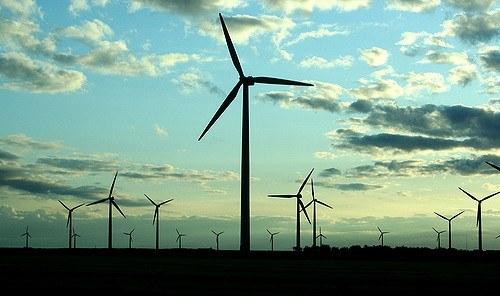

It’s a good time for wind energy, particularly in the European Union. The EU added more new wind-energy capacity than any other form of power last year, according to a report by the European Wind Energy Association.
In the 28 EU member countries, wind accounted for 44 percent of all new power installations and connected 12.8 gigawatts to the grid, with nearly 10 GW in onshore wind and 3 GW in offshore wind. This amounted to a 6.3 percent increase in wind installations over 2014. Total wind capacity in the EU is now 142 GW and accounts for 11.4 percent of power needs.
Most of the new wind installations in 2015 occurred in Germany, with Poland the second largest wind power installer. Germany accounted for 47 percent of all new installations, and has the largest installed capacity among EU countries at 45 GW, leading in 2015 with more than 6 GW of newly-installed wind power. The report cites three factors that account for Germany’s leadership:
- Effective policies
- The connection of large amounts of offshore capacity that was installed in 2014 but was not grid connected
- A desire by the industry to complete installations before Germany moves to market-based arrangements in 2017
It wasn’t a good year for fossil fuel generated power, as conventional power sources like fuel oil and coal continued to decommission more capacity than they install. EU countries decommissioned 8 GW of coal capacity, 4.3 GW of gas and 3.3 GW of fuel oil. However, renewables installations accounted for 22.3 GW, or 77 percent, of all new installed capacity in Europe.
Wind power is no longer an alternative energy source. “Last year, Europe added more new wind capacity than coal, gas and nuclear. We no longer think of wind power as an alternative technology,” Oliver Joy, spokesperson for the European Wind Energy Association, told TriplePundit. “It is mainstream and mature – not to mention onshore wind is the cheapest form of new power generation available to us. An energy transition is underway in Europe and wind power is at its heart.”
Once considered fringe, offshore wind capacity also increased last year in Europe, accounting for 24 percent of total wind power installations, which is double its share in 2014. “This confirms the growing relevance of the offshore wind industry in the development of wind energy in the EU,” the report stated. Or, as Joy said, “It was a strong year for offshore wind, which was a key driver behind the record numbers.”
The problems facing the wind power sector
While the report reveals good news for the wind power sector, it also shows some problems, Joy pointed out. “The market is very concentrated, particularly in Germany,” he said. “Almost half of the new installations were in Europe’s largest economy. Furthermore, we expect to see a dip in wind installations in 2016. We could see a rebound for offshore wind in 2017, but the outlook for onshore in Europe is less certain.”Those aren't the only problems for the EU’s wind power sector. It is also facing increasing competition. China is out to deploy 200 GW worth of wind energy by 2020, and it overtook the EU this year on installed wind capacity. China is now the greatest producer of wind power in the world. Last year, China installed 30.5 GW of new wind power, out of 63 GW installed globally, and has about 145 GW of total wind power installed. The global total of installed wind power is 432 GW.
The U.S. extended the wind production tax credit to 2019. The credit is currently worth 2.3 cents per kilowatt-hour of energy generated for the power grid, according to the American Wind Energy Association (AWEA). The tax credit is a contributing factor to wind power more than quadrupling in the U.S. since 2008, with 69.5 GW installed by the third quarter of 2015, an increase from 16.7 GW installed in the beginning of 2008.
“Europe is stuck in the middle with a patchwork of stop-start policies that have the potential to send investors elsewhere,” Joy said. “The world is hot on Europe’s heels, and now is no time to rest on laurels.”
Clearly, it's time for the 28 member EU countries to step it up. More wind energy installed means less fossil fuel-based power -- and that means less greenhouse gas emissions. And that is great for the world and its people.
Image credit: Flickr/Petter Palander